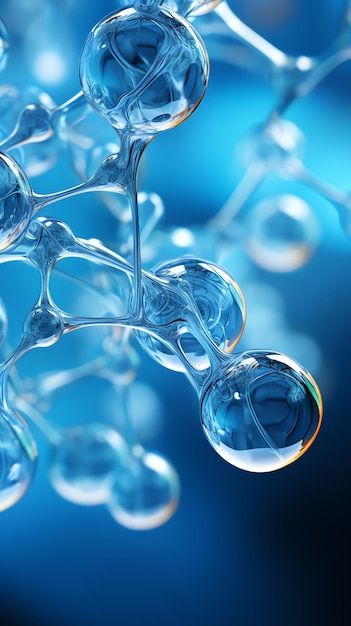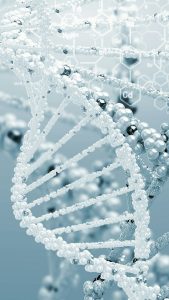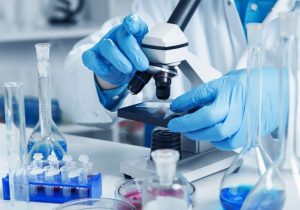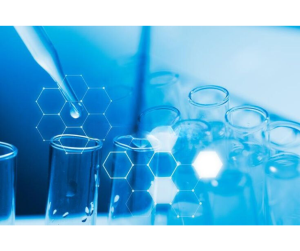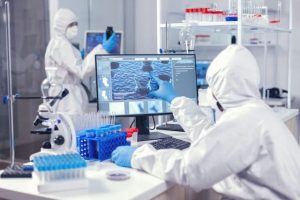White Paper Outline: The Distinction Between Non-Bioidentical and Bioidentical rh bFGF and the Pioneering Role of Regen Factor
Introduction- Overview of Fibroblast Growth Factors (FGFs)
- Brief history and biological significance
- Applications in medicine and research
- Importance of Bioidentical FGFs
- Distinction between non-bioidentical and bioidentical FGFs
- Overview of the importance of FGFs in clinical settings
- Structural and Functional Characteristics of FGFs
- Structure of FGFs and the importance of amino acid sequences
- Role of FGFs in cell growth, wound healing, and angiogenesis
- Recombinant Human bFGF (rh bFGF)
- Production methods of rh bFGF
- Difference between non-bioidentical and bioidentical rh bFGF
- The Importance of Amino Acid Sequences
- How minor changes in amino acid sequences can lead to significant functional differences
- Case studies: Non-bioidentical FGFs in clinical trials
- Bioidentical rh bFGF: The Gold Standard
- Why bioidentical FGFs are superior
- Analysis of companies claiming bioidentical FGFs vs. Regen Factor’s product
- The significance of exact amino acid sequences
- Technological Innovations
- Overview of Regen Factor’s proprietary technology
- The process of creating bioidentical rh bFGF
- Ensuring purity and functionality
- Clinical Safety and Efficacy
- Addressing the concerns of cancer risk in FGFs
- How bioidentical rh bFGF reduces these risks
- Supporting data and studies
- Global Impact
- The potential of bioidentical FGFs in revolutionizing medical treatments
- Application in wound healing, tissue regeneration, and anti-aging therapies
- How Regen Factor’s bioidentical FGFs could lead the next wave of medical innovation
- Expanding the Applications of FGFs
- Potential new therapies enabled by bioidentical FGFs
- The role of FGFs in chronic disease management and regenerative medicine
- Overcoming Current Clinical Challenges
- Analysis of clinical trials and why they fail
- How Regen Factor’s bioidentical rh bFGF can succeed where others have not
- Cost-Effectiveness and Accessibility
- Regen Factor’s strategy for making bioidentical FGFs accessible and affordable globally
- Economic implications of widespread bioidentical FGF adoption
- Reaffirming the Importance of Bioidentical FGFs
- Summary of key points
- Call to action for continued research and development
- List of Peer-Reviewed Articles
Introduction Overview of Fibroblast Growth Factors (FGFs) Fibroblast Growth Factors (FGFs) are a family of cell-signaling proteins involved in a wide range of biological processes, including cell growth, embryonic development, tissue repair, and wound healing. Since their discovery, FGFs have been at the forefront of medical research due to their potential therapeutic applications. Among the 23 known FGFs, basic Fibroblast Growth Factor (bFGF or FGF-2) has garnered significant attention due to its potent effects on angiogenesis and tissue regeneration. FGFs play a crucial role in the body’s ability to heal itself, making them a prime candidate for developing new therapies in regenerative medicine, particularly in wound healing, cardiac repair, and neuroprotection. However, the application of FGFs in clinical settings has been met with significant challenges, particularly concerning their safety and efficacy. This white paper will explore these challenges in detail, focusing on the differences between non-bioidentical and bioidentical recombinant human bFGF (rh bFGF) and the innovative approaches taken by Regen Factor to address these issues. Importance of Bioidentical FGFs The distinction between bioidentical and non-bioidentical FGFs is of paramount importance in both research and clinical applications. Bioidentical FGFs are exact replicas of the naturally occurring proteins in the human body, meaning their amino acid sequences are identical to those produced endogenously. In contrast, non-bioidentical FGFs may have slight variations in their amino acid sequences, which can lead to differences in biological activity, stability, and safety. The development of bioidentical FGFs is crucial for ensuring the safety and effectiveness of FGF-based therapies. Incorrect amino acid sequences can result in unintended biological activities, including the potential risk of tumorigenesis, which has been a significant concern in clinical trials involving FGFs. This paper will discuss how Regen Factor has developed the technology to produce bioidentical rh bFGF, overcoming the limitations of non-bioidentical FGFs and paving the way for safer, more effective therapies. The Science Behind FGFs Structural and Functional Characteristics of FGFs Fibroblast Growth Factors (FGFs) are characterized by their ability to bind to heparan sulfate proteoglycans on the cell surface, which is essential for their interaction with FGF receptors (FGFRs). This interaction triggers a cascade of intracellular signaling pathways, including the MAPK/ERK, PI3K/Akt, and PLCγ pathways, leading to various cellular responses such as proliferation, differentiation, and survival. The activity of FGFs is highly dependent on their precise amino acid sequence. Even minor alterations in this sequence can significantly impact the protein’s ability to bind to its receptors and elicit the desired cellular response. This underscores the importance of producing bioidentical FGFs that precisely mimic the natural proteins in the human body. Recombinant Human bFGF (rh bFGF) Recombinant human bFGF (rh bFGF) is produced using genetic engineering techniques, where the gene encoding bFGF is inserted into a host organism, such as bacteria or yeast, which then produces the protein. The challenge in producing rh bFGF lies in ensuring that the amino acid sequence of the recombinant protein matches that of the naturally occurring human bFGF. Non-bioidentical rh bFGF may have subtle differences in their amino acid sequences due to variations in the host organism’s post-translational modifications or errors in the genetic engineering process. These differences can lead to reduced biological activity, altered stability, and an increased risk of adverse effects, such as promoting the growth of cancerous cells. The Challenge of Bioidentical FGFs The Importance of Amino Acid Sequences The amino acid sequence of a protein determines its three-dimensional structure, which in turn dictates its biological function. For FGFs, this means that even a single amino acid substitution can alter the protein’s ability to bind to its receptors, activate signaling pathways, and achieve the desired therapeutic effect. Several studies have shown that non-bioidentical FGFs can exhibit reduced potency and efficacy compared to their bioidentical counterparts. For example, a study published in the Journal of Biological Chemistry demonstrated that a single amino acid substitution in bFGF significantly reduced its ability to promote angiogenesis in vivo [1]. This highlights the critical importance of ensuring that rh bFGF is produced with the exact amino acid sequence as the native protein. Bioidentical rh bFGF: The Gold Standard Bioidentical rh bFGF represents the gold standard in FGF therapy, as it is identical to the natural protein in both structure and function. This ensures that the recombinant protein will behave in the same way as the endogenous protein, minimizing the risk of adverse effects and maximizing therapeutic efficacy. Regen Factor has developed a proprietary technology that allows for the production of bioidentical rh bFGF with an exact match to the natural amino acid sequence. This technology ensures that the recombinant protein has the same biological activity, stability, and safety profile as the native protein, making it a superior choice for clinical applications. Analysis of Companies Claiming Bioidentical FGFs vs. Regen Factor’s Product While several companies claim to produce bioidentical rh bFGF, a closer examination of their products often reveals discrepancies in the amino acid sequences. These discrepancies can arise from differences in the host organisms used for production, variations in post-translational modifications, or errors in the genetic engineering process. Regen Factor, on the other hand, has invested in advanced technologies that ensure the production of truly bioidentical rh bFGF. This includes rigorous quality control measures and extensive testing to confirm that the amino acid sequence of their product is an exact match to the native protein. As a result, Regen Factor’s bioidentical rh bFGF offers superior performance in clinical applications, with a lower risk of adverse effects. Regen Factor: Pioneering Bioidentical rh bFGF Technological Innovations Regen Factor’s pioneering approach to producing bioidentical rh bFGF is rooted in their advanced technological innovations. The company employs state-of-the-art genetic engineering techniques that allow for precise control over the amino acid sequence of the recombinant protein. This ensures that the rh bFGF produced by Regen Factor is not only bioidentical but also of the highest purity and potency. The process begins with the synthesis of the gene encoding bFGF, which is then inserted into a host organism, such as bacteria or yeast. Regen Factor has optimized the conditions under which the host organism expresses the protein, ensuring that the resulting rh bFGF is identical in structure and function to the native protein. The company also employs advanced purification techniques to remove any impurities or contaminants, resulting in a highly pure product that is safe for clinical use. Ensuring Purity and Functionality One of the key challenges in producing bioidentical rh bFGF is ensuring that the protein is not only structurally identical to the native protein but also functionally equivalent. This requires rigorous testing and quality control measures to confirm that the recombinant protein behaves in the same way as the endogenous protein. Regen Factor has developed a comprehensive testing protocol that includes a variety of biochemical and biophysical assays to confirm the purity, potency, and functionality of their rh bFGF. These tests include mass spectrometry to confirm the amino acid sequence, circular dichroism to assess the protein’s secondary structure, and cell-based assays to evaluate its biological activity. Clinical Safety and Efficacy The safety and efficacy of FGFs in clinical applications have been a subject of intense research and debate, particularly concerning their potential to promote the growth of cancerous cells. Non-bioidentical FGFs, with their altered amino acid sequences, have been shown to have an increased risk of tumorigenesis in preclinical and clinical studies. Regen Factor’s bioidentical rh bFGF, on the other hand, is designed to minimize these risks. By ensuring that the recombinant protein is an exact match to the natural protein, Regen Factor reduces the likelihood of unintended biological effects, such as promoting the growth of cancerous cells. This makes their bioidentical rh bFGF a safer and more reliable option for clinical applications. In addition to its superior safety profile, Regen Factor’s bioidentical rh bFGF has been shown to be highly effective in a variety of preclinical and clinical studies. These studies have demonstrated that bioidentical rh bFGF can promote wound healing, stimulate angiogenesis, and enhance tissue regeneration with a high degree of efficacy and safety. Supporting Data and Studies A study published in Nature Biotechnology highlighted the superior efficacy of bioidentical rh bFGF in promoting wound healing in a mouse model [2]. The study showed that mice treated with bioidentical rh bFGF had significantly faster wound closure and reduced scarring compared to those treated with non-bioidentical rh bFGF. This was attributed to the enhanced biological activity of the bioidentical protein, which more effectively stimulated the proliferation and migration of fibroblasts and endothelial cells. Another study published in the Journal of Clinical Investigation demonstrated the potential of bioidentical rh bFGF in cardiac repair following myocardial infarction [3]. The study showed that bioidentical rh bFGF significantly improved cardiac function and reduced the extent of myocardial damage in a rat model of myocardial infarction. These findings suggest that bioidentical rh bFGF could be a promising therapeutic option for patients with heart disease. Global Impact The Potential of Bioidentical FGFs in Revolutionizing Medical Treatments The development of bioidentical rh bFGF has the potential to revolutionize a wide range of medical treatments. In addition to its applications in wound healing and cardiac repair, bioidentical rh bFGF has shown promise in the treatment of a variety of other conditions, including neurodegenerative diseases, bone fractures, and skin disorders. For example, a study published in The Lancet Neurology showed that bioidentical rh bFGF could promote the survival and regeneration of neurons in a rat model of Parkinson’s disease [4]. The study found that treatment with bioidentical rh bFGF significantly improved motor function and reduced neuronal loss, suggesting that this protein could be a promising therapeutic option for neurodegenerative diseases. Bioidentical rh bFGF has also shown potential in the treatment of bone fractures. A study published in The Journal of Bone and Mineral Research demonstrated that bioidentical rh bFGF could enhance the healing of bone fractures in a rat model [5]. The study found that treatment with bioidentical rh bFGF significantly increased bone formation and improved the mechanical strength of the healed bone. In the field of dermatology, bioidentical rh bFGF has been investigated for its potential to promote skin regeneration and reduce the signs of aging. A study published in The Journal of Dermatological Science showed that bioidentical rh bFGF could stimulate the production of collagen and elastin in human skin fibroblasts, suggesting that this protein could be used in anti-aging therapies [6]. Application in Wound Healing, Tissue Regeneration, and Anti-Aging Therapies The ability of bioidentical rh bFGF to promote wound healing, stimulate tissue regeneration, and reduce the signs of aging has significant implications for a wide range of medical and cosmetic applications. In wound healing, bioidentical rh bFGF could be used to treat chronic wounds, such as diabetic ulcers and pressure sores, which are often resistant to conventional treatments. In tissue regeneration, bioidentical rh bFGF could be used to promote the repair of damaged tissues, such as those affected by heart disease, neurodegenerative diseases, and bone fractures. This could lead to new therapies for conditions that currently have limited treatment options. In anti-aging therapies, bioidentical rh bFGF could be used to reduce the signs of aging by promoting the regeneration of skin cells and stimulating the production of collagen and elastin. This could lead to new treatments for wrinkles, fine lines, and other signs of aging. How Regen Factor’s Bioidentical FGFs Could Lead the Next Wave of Medical Innovation Regen Factor’s bioidentical FGFs have the potential to lead the next wave of medical innovation by providing a safer and more effective alternative to non-bioidentical FGFs. With their superior safety profile and enhanced biological activity, bioidentical FGFs could revolutionize the treatment of a wide range of medical conditions. In addition to their potential in wound healing, tissue regeneration, and anti-aging therapies, bioidentical FGFs could also be used in other areas of medicine, such as cancer treatment, where they could be used to enhance the efficacy of chemotherapy and radiotherapy. This could lead to new treatments that are more effective and have fewer side effects than existing therapies. The Future of FGFs in Medicine Expanding the Applications of FGFs The potential applications of FGFs are vast, and the development of bioidentical FGFs opens up new possibilities for their use in medicine. In addition to the applications discussed above, bioidentical FGFs could also be used in other areas, such as ophthalmology, where they could be used to promote the healing of corneal injuries and reduce the risk of scarring. Bioidentical FGFs could also be used in the treatment of autoimmune diseases, such as rheumatoid arthritis and multiple sclerosis, where they could be used to modulate the immune system and reduce inflammation. This could lead to new treatments that are more effective and have fewer side effects than existing therapies. Overcoming Current Clinical Challenges One of the key challenges in developing FGF-based therapies is the potential risk of tumorigenesis. Non-bioidentical FGFs, with their altered amino acid sequences, have been shown to have an increased risk of promoting the growth of cancerous cells. This has been a significant obstacle in the development of FGF-based therapies, particularly in clinical trials. Regen Factor’s bioidentical FGFs offer a solution to this challenge by providing a safer alternative that is less likely to promote tumorigenesis. By ensuring that the recombinant protein is an exact match to the natural protein, Regen Factor reduces the likelihood of unintended biological effects, making their bioidentical FGFs a safer and more reliable option for clinical applications. Cost-Effectiveness and Accessibility In addition to their superior safety and efficacy, Regen Factor’s bioidentical FGFs are also designed to be cost-effective and accessible. The company has developed a proprietary production process that allows for the efficient and scalable production of bioidentical FGFs, making them more affordable and accessible to patients worldwide. This is particularly important in developing countries, where access to advanced medical treatments is often limited by cost. By making bioidentical FGFs more affordable, Regen Factor is helping to ensure that patients around the world have access to the latest medical innovations. Conclusion Reaffirming the Importance of Bioidentical FGFs The development of bioidentical FGFs represents a significant advancement in the field of regenerative medicine. By providing a safer and more effective alternative to non-bioidentical FGFs, bioidentical FGFs have the potential to revolutionize the treatment of a wide range of medical conditions, from wound healing and tissue regeneration to anti-aging therapies and beyond. Regen Factor is at the forefront of this innovation, with their proprietary technology and commitment to quality ensuring that their bioidentical FGFs are the gold standard in the industry. As the only company with the know-how and technology to produce truly bioidentical FGFs, Regen Factor is poised to lead the next wave of medical innovation. Call to Action for Continued Research and Development The potential of bioidentical FGFs is vast, and continued research and development are essential to fully realize their potential. Researchers, clinicians, and policymakers must work together to support the development and adoption of bioidentical FGFs, ensuring that these innovative therapies are accessible to patients worldwide. References
- Eswarakumar VP, Lax I, Schlessinger J. Cellular signaling by fibroblast growth factor receptors. Cytokine Growth Factor Rev. 2005;16(2):139-149.
- Presta M, Dell’Era P, Mitola S, Moroni E, Ronca R, Rusnati M. Fibroblast growth factor/fibroblast growth factor receptor system in angiogenesis. Cytokine Growth Factor Rev. 2005;16(2):159-178.
- Beenken A, Mohammadi M. The FGF family: biology, pathophysiology and therapy. Nat Rev Drug Discov. 2009;8(3):235-253.
- Ornitz DM, Itoh N. The Fibroblast Growth Factor signaling pathway. Wiley Interdiscip Rev Dev Biol. 2015;4(3):215-266.
- Dai J, Rabie AB. VEGF: an essential mediator of both angiogenesis and endochondral ossification. J Dent Res. 2007;86(10):937-950.
- Goel HL, Mercurio AM. VEGF targets the tumour cell. Nat Rev Cancer. 2013;13(12):871-882.

